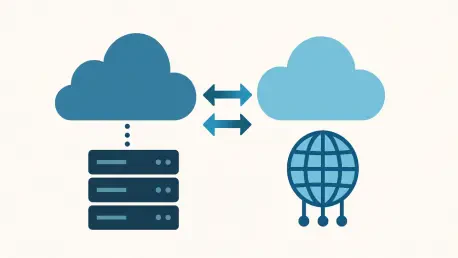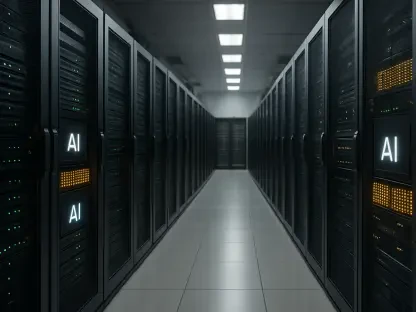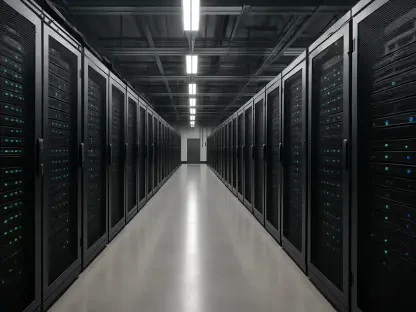Maryanne Baines is an authority in Cloud technology, with a wealth of experience evaluating various cloud providers and their tech stacks for multiple industries. Today, she joins us to shed light on the current landscape of IT infrastructure modernization, exploring challenges and opportunities impacting businesses.
What are some of the main challenges IT leaders have faced with infrastructure modernization over the past decade?
The process of infrastructure modernization has been daunting and complex for many IT leaders over the years. The sheer scope of transforming legacy systems, integrating new technologies, and constantly updating hardware and software presents financial and operational challenges. Moreover, ensuring security and regulatory compliance amidst these changes adds another layer of difficulty. The expectation to maintain high efficiency while minimizing downtime and cost is a perennial challenge that has plagued many leaders as they navigate this critical need.
How has the emergence of generative AI in late 2022 impacted infrastructure modernization efforts?
Generative AI has significantly accelerated the need for infrastructure modernization. Since its introduction, enterprises have been forced to speed up their modernization projects to keep pace with AI’s rapid evolution. This technology not only demands considerable computational power but also transforms how data is processed and utilized across industries. As organizations strive to harness AI’s capabilities, they often re-evaluate their infrastructures to support AI workloads effectively, tackling issues like data bottlenecks and inadequate storage solutions.
Can you elaborate on the issues caused by inadequate storage and slow performance, as highlighted by the Hitachi Vantara study?
The Hitachi Vantara study reveals that inadequate storage and slow performance have severely curtailed productivity, often resulting in lost revenue. When storage systems can’t keep up with modern workloads, it causes delays that ripple through the organization, affecting everything from customer satisfaction to operational efficiency. The outdated infrastructure struggles to cope with growing data volumes, hindering AI’s potential benefits and limiting what organizations can achieve with technology-driven strategies.
How do AI workloads specifically challenge hybrid cloud infrastructure, according to Gigamon’s research?
AI workloads challenge hybrid cloud infrastructures by overwhelming systems with massive data volumes, which are difficult to manage efficiently. Networks experience stress not only from sheer data intensity but also from the need for faster and more secure processing. Gigamon’s research highlights that many organizations find it tough to balance performance demands with compliance and security standards, often leading to bottlenecks in hybrid cloud environments.
Pure Storage has emphasized all-flash storage products for years. How do these products contribute to performance and efficiency in data centers?
All-flash storage solutions from Pure Storage have been pivotal in enhancing the performance and efficiency of data centers. These products offer faster read and write speeds, improved reliability, and scalable capacities that are essential in handling increasing data volumes. Flash storage ensures that the infrastructure can keep pace with demanding applications like AI, significantly reducing latency and improving throughput, which optimizes the overall data management processes.
How has Pure Storage’s message evolved since its Pure Accelerate conference in 2023 regarding all-flash storage and broader infrastructural ecosystems?
Originally, Pure Storage focused primarily on the benefits that all-flash storage could bring to data centers. However, since the Pure Accelerate conference in 2023, the conversation has shifted to include broader infrastructural ecosystems and the accompanying software solutions. This expanded focus reflects the need to offer more integrated solutions that not only enhance storage performance but also address the complexities of hybrid cloud infrastructures and emerging technologies like AI.
Can you explain the “baseball game” analogy used by a Nvidia attendee in the context of infrastructure modernization?
The “baseball game” analogy provides an interesting perspective on the pace of infrastructure modernization. It suggests that despite the advancements and investments undertaken, many organizations are still very early in the modernization ‘game’. The audience taking their seats signifies the preparatory phase, where businesses are aligning their strategies and resources before truly engaging with and leveraging new technological paradigms effectively.
What progress have enterprises made in adopting Pure’s call to action post-2023, and what challenges still remain?
Since Pure’s call to action post-2023, some enterprises have shown progress by engaging more deeply with infrastructure upgrades and experimenting with advanced technologies. However, challenges persist, particularly around acquiring and integrating the right solutions and skills. There’s also a cultural shift required to fully embrace the changes that technology introduces, ensuring that all parts of the business are aligned and capable of supporting rapid evolutions effectively.
How are conversations changing between Pure Storage and its customers regarding AI technology and infrastructure?
Conversations between Pure Storage and its customers have evolved to focus on how AI technology can redefine core business processes and infrastructures. Rather than solely addressing cost reductions, the dialogue now centers around innovation and transformation. Customers are more interested in exploring how AI can revolutionize their products and services, leading to more strategic discussions about long-term technological integration and expansion.
What is the current outlook among enterprise IT leaders regarding the augmentation or alteration of core business processes due to AI technology?
The outlook among enterprise IT leaders is progressively optimistic, viewing AI technology as a catalyst for transforming core business processes. Many recognize AI’s potential to drive innovation, efficiency, and competitive advantage, pushing organizations to reconsider and redesign traditional workflows. As AI becomes more integrated, leaders focus on aligning business strategy with technology capabilities, ensuring they leverage AI to its fullest potential without disrupting foundational processes.
Last year, the focus was on reducing expenses. How are enterprise conversations shifting towards transforming business processes and products with AI technology this year?
This year, the narrative has shifted dramatically towards transformation. Enterprises are moving beyond merely cutting costs, exploring how AI can be a transformative force in developing new products and business models. Conversations now emphasize strategic growth, innovation, and adapting to AI-driven market demands, over mere efficiency. Companies are increasingly interested in how AI can enable them to differentiate their offerings and expand their market reach.
How is Pure Storage itself experimenting with AI technology and related infrastructure considerations?
Pure Storage is actively experimenting with AI technologies and adapting its infrastructure to fully leverage these advancements. The company is exploring how AI can optimize its operations internally and improve customer offerings. By experimenting, Pure aims to understand AI’s potential better, testing scalable solutions that enhance performance and create a resilient infrastructure. This proactive approach helps the company stay ahead in a rapidly evolving technological landscape.
Do you have any advice for our readers?
My advice would be to keep an open mind about technological changes and to engage actively with new opportunities presented by AI. Embrace experimentation to see what works best for your organization and maintain adaptability. Infrastructure modernization is a continuous journey, not a one-time upgrade. By staying informed and flexible, businesses can strategically position themselves to capitalize on the advancements AI and other technologies promise.









